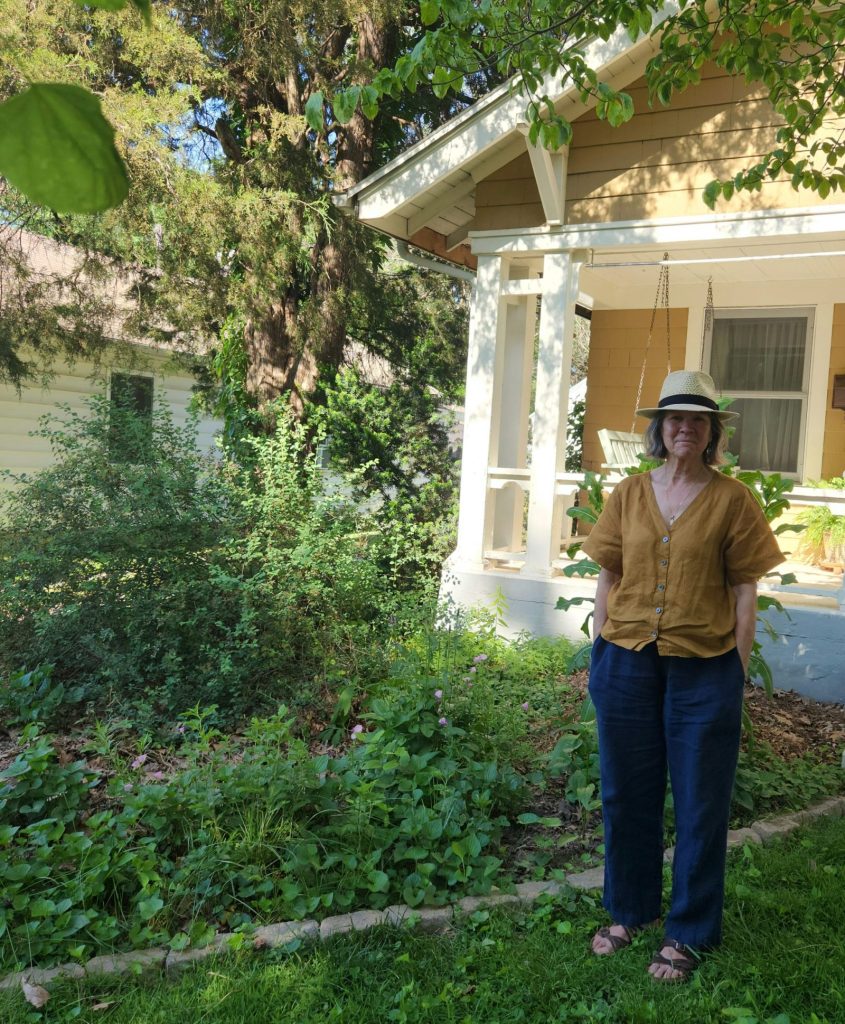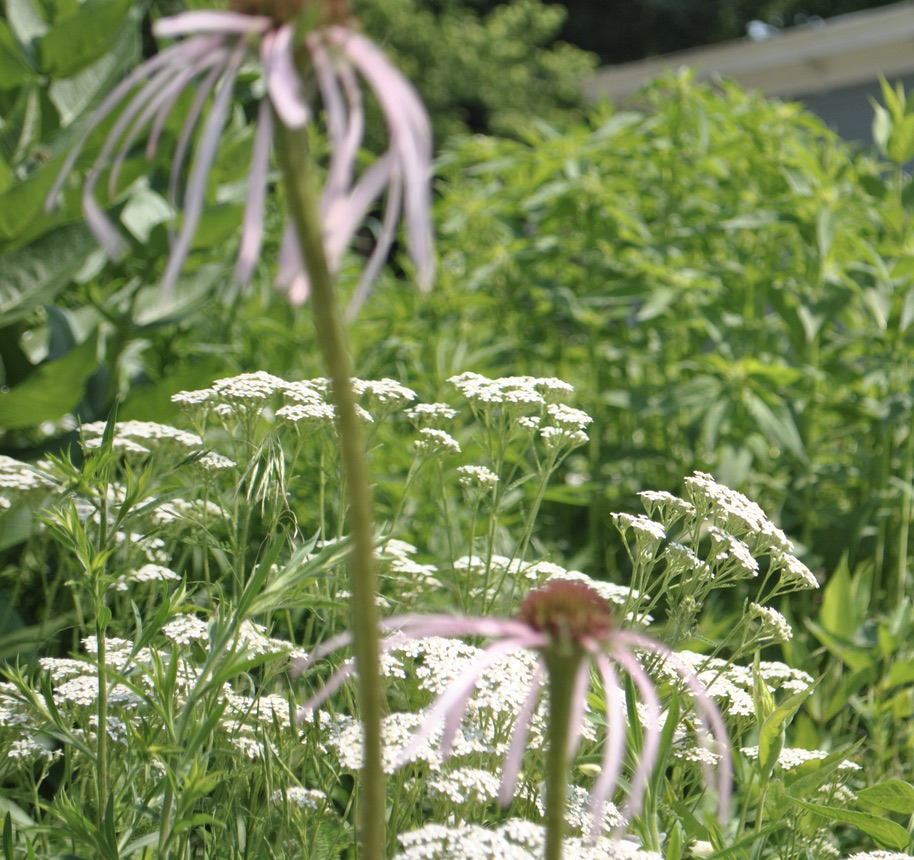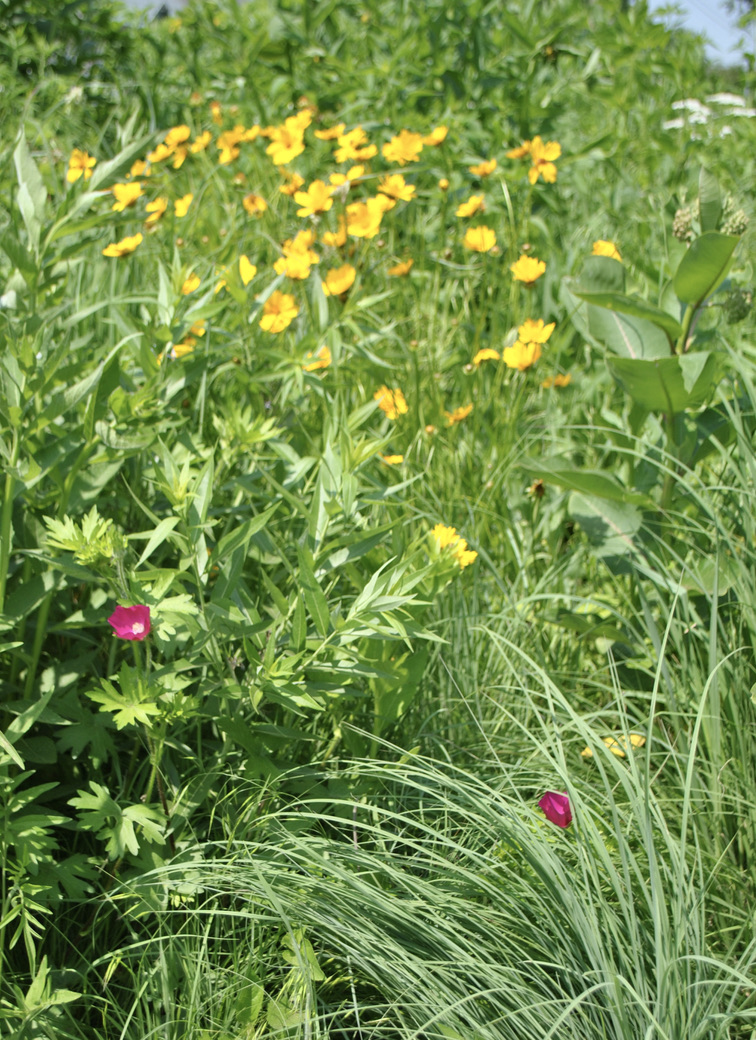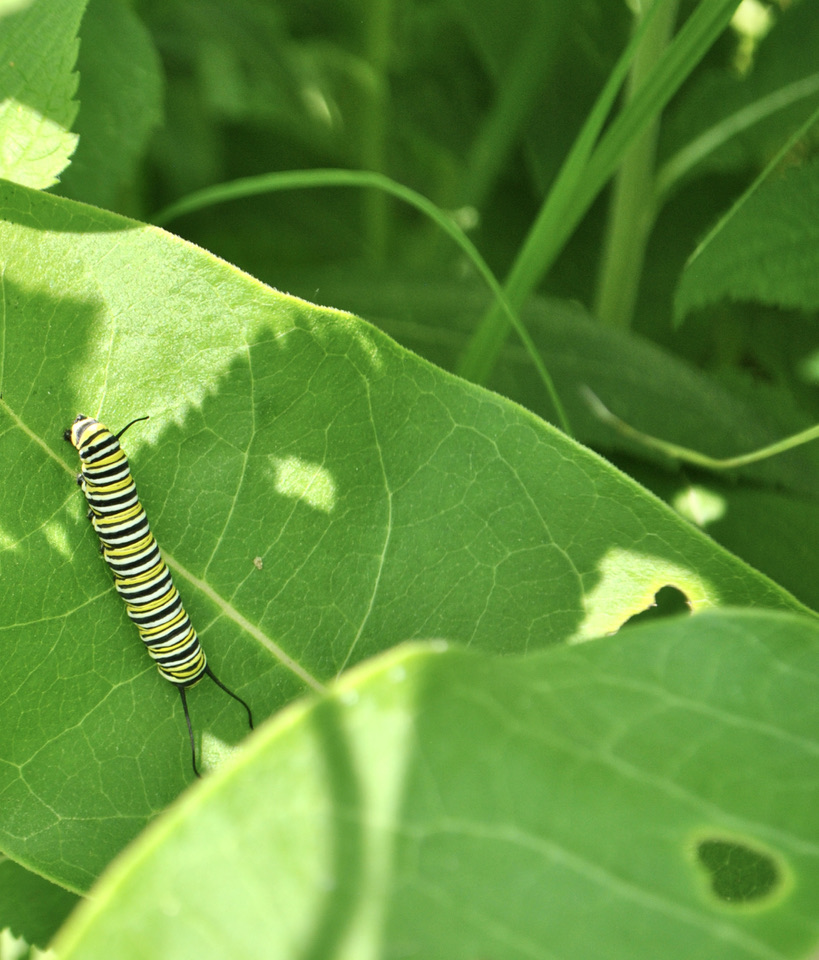When Susan Mattheis moved to Springfield’s Doling neighborhood 10 years ago, the backyard to her 1918 Craftsman bungalow was a patch of grass dotted with a couple of dogwoods and one pecan tree.
And except for its own tree or two, nothing much besides grass was growing in the front yard, either.
Some homeowners — thinking the fewer plants, the less lawn maintenance — might ask what was wrong with that picture. Mattheis, office manager and conservation coordinator for Ozark Greenways, looked at it from a botanist’s point of view and saw a food desert for wildlife.
“There’s not much for bees to eat, given our current practices,” she said of the mowing, fertilizing and weed-killing process that gets repeated every spring, summer and fall on countless American lawns.

Trying to cultivate and maintain a green, manicured lawn, many a homeowner becomes all too weary of that chore cycle by the time the growing season ends.
Yet for a few, like Mattheis, replacing some of that turf with native plants has not only meant less time spent mowing. It also means more satisfaction in knowing they’re doing their part to benefit the environment, all while providing an all-you-can-eat buffet for birds, bees, butterflies and other wildlife.
“I never know what I’m going to look out the window and see,” said Mattheis, who spots backyard birds like kestrels and Baltimore orioles as she works in her kitchen.
While Mattheis was able to draw from her own expertise and research to plant beds and borders of native shrubs, trees and flowers in place of grass, a small group of Springfieldians are looking to guidance from a program with a mission to help residents beautify their lawns and contribute to the city’s efforts to improve water quality.
Incentives from Yard Ethic
Started in 2021, the Yard Ethic program offers incentives like free soil tests, native plants and trees, and rain barrel rebates to residents pledging to commit to environmentally beneficial lawn care practices — all of which can help prevent pollution from stormwater runoff.

That’s an issue here, according to Carrie Lamb, water quality compliance officer for the City of Springfield’s environmental services department.
“Some of our streams here in Springfield — Jordan Creek and Wilson’s Creek, specifically – are on the state’s impaired waters list,” Lamb said. “Basically, that means in some way they are not meeting the state water quality criteria.”
Lawn care practices can add to that pollution, Lamb says, explaining that when it rains, excess fertilizer and other chemicals left on yards first seep into storm drains, then make their way into waterways.
Getting a soil test — one practice on Yard Ethic’s checklists for participants — is important to make sure that too much fertilizer isn’t used in the first place, Lamb says.
Other environmentally beneficial practices – gardening with native plants and trees, collecting rainwater, composting food waste, establishing rain gardens, eradicating invasive plants and using non-hazardous alternatives to herbicides and pesticides – can also help control runoff and prevent pollution, Lamb says.
Native plants and trees, for example, can help control stormwater runoff. Their deep root systems soak up stormwater, Lamb explained.
“We have folks out there that are really doing great, beneficial things in their yard and implementing a lot of these practices,” Lamb said.
Levels of certification
With advice and hands-on help from experts with the city as well as James River Basin Partnership, so far about a dozen Yard Ethic participants have earned silver certification by implementing three beneficial practices or gold certification by practicing five.

A “Gold-Certified” Yard Ethic sign is staked in a corner of the front yard at Caleb Sanders’ West Central home — along with signs declaring it a habitat restoration project, a certified wildlife habitat and a monarch butterfly waystation.
Sanders is a conservation coordinator for the Springfield-Greene County Park Board. Sanders says he was eager to sign up when the program started. He had a problem to solve: the basement of his 120-year-old house flooded when it rained.
Installing a sump pump caught some of the water, yet so did planting native shrubs and trees like hazelnut and serviceberry on the lawn at the side of the house most affected by the runoff.
“These are the plants that are doing the heavy lifting,” Sanders said, looking up at the fast-growing shrubs and trees — now taller than the 6-foot-4 homeowner — that guzzle the rain water before it reaches his basement.
However, it’s Sanders’ front yard that attracts more attention.
Instead of being blanketed with grass, it’s filled with more than 100 species of wildflowers, all planted from seed, from clusters of white yarrow to the delicate purple blossoms of shining blue star plants.
Some of Sanders’ plants stand several feet tall.
“This is a different universe than turf,” Sanders said.
That’s not to say it’s a universe of less labor, though.
“Not mowing doesn’t mean not having to work,” Sanders said, adding that it takes “lots of weeding” to keep some plants from overtaking others.
Years of fertilizer build-up in the soil probably accounts for the fact that some of the natives are “three times the height that they would be on the prairie,” he added. Sanders collected their seeds in undisturbed prairies as well as through Missouri Wildflowers Nursery, so he hopes they’ll revert back to their original sizes soon.
Positive effects on people and their neighbors
Meanwhile, getting outside to work on the yard has given Sanders the chance to get to know his neighbors, invite them to pick bouquets — and tell the story of how he’s trying to make a difference in their neighborhood, the corner of the Grand and Kickapoo prairies more than a century ago, he says.

“Something objective is happening here,” said Sanders, who with his wife, Preslee, and their 2-year-old son, Ives, enjoys his front-porch view of butterflies and goldfinches eating bugs off flowers. “I’m not just being an insane plant guy.”
However, homeowners can also make a positive impact on the environment by dedicating much smaller spaces of their lawns to native plants, Lamb says.
“Folks don’t have to eliminate their entire lawn,” Lamb said. “In fact, we would recommend people start on a smaller scale.
A 100-square-foot plot of plants is “something that’s really achievable for most folks, and they can continue to work on it from there,” Lamb said, adding that this is one practice that qualifies participants for silver certification.
Start small, form the framework
Mattheis isn’t part of the Yard Ethic program, yet starting on a small scale was her approach as she turned over most of the turf at her home to beds and borders of natives.

In the backyard, she first planted shrubs and trees like buttonbush, elderberry and ninebark around the perimeter “because they form a framework,” she said.
“You want to do the pretty jewelry, the flowers, first, but you’re better off if you do the framework,” Mattheis explained.
Now, the shrubs and trees form a backdrop for flowers like irises, daylilies, phlox and viburnum, with wild violets left in place as ground cover.
From a paved courtyard she calls her “prosecco patio” to remind her of a trip to Italy, Mattheis has a view of birds splashing in a concrete bath and of a “medicine wheel” garden of plants ranging from asters to jewelweed, a native impatiens. From her front porch, Mattheis looks over a large curved bed of shrubs and flowers where there once was grass.
“I’ve tried to make it to where it’s controlled but natural,” she said.
Resources like the Missouri Prairie Foundation’s Grow Native program, Springfield Community Gardens and University of Missouri Extension have helped, she says, and can help others interested in growing more natives and less grass.
“Anybody can do what I have done,” Mattheis said. “You do it a little bit at a time.”
According to Lamb, even “just a yard here and a yard there” of environmentally beneficial practices can help protect waterways and nurture wildlife.
“I’m certain there’s lots more of this going on out there than we even know about, and that’s fantastic,” she said. “We have a saying in our department that our collective efforts make one big impact.
“Every little bit helps.”


